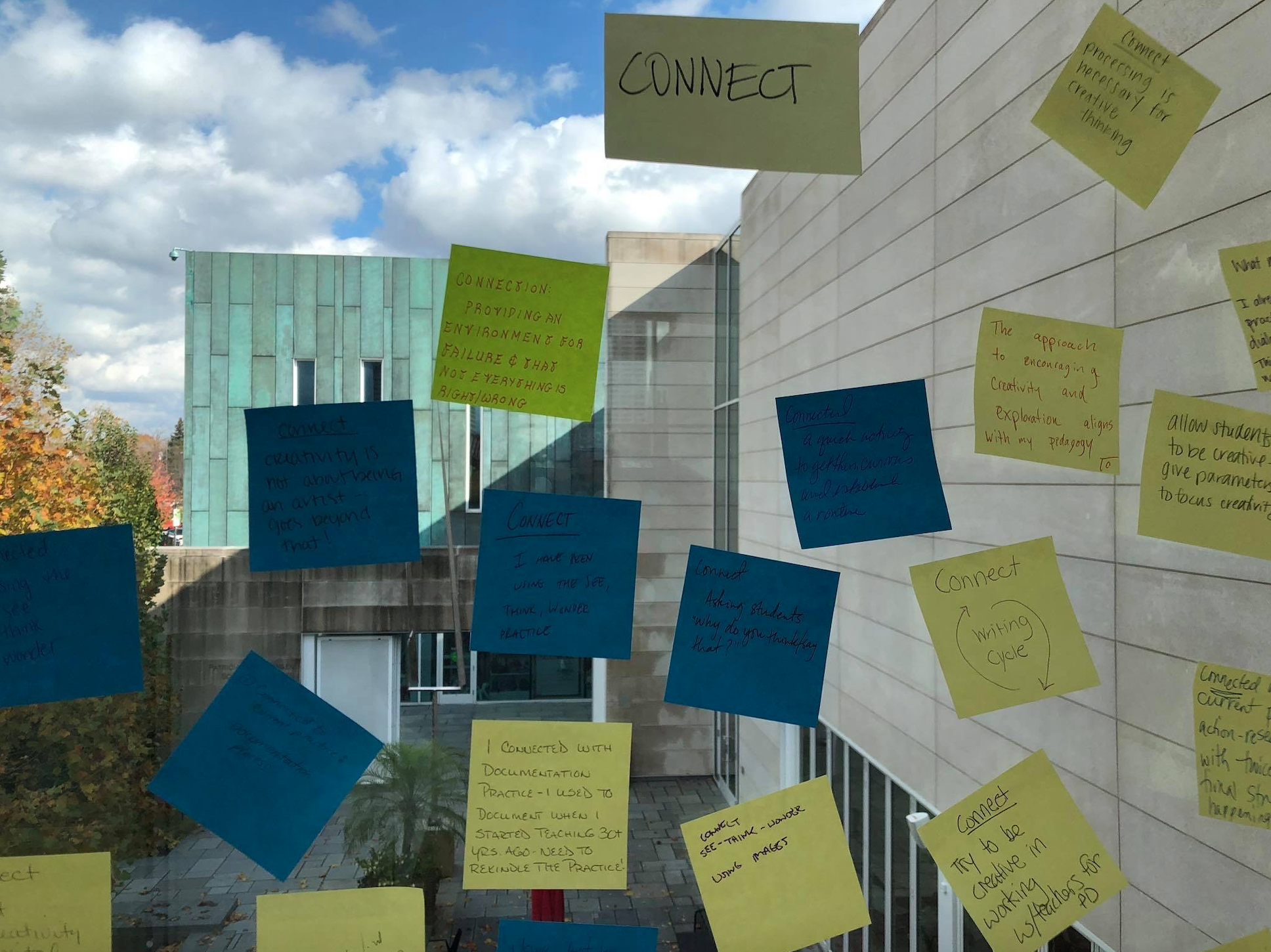What does it mean to really focus on creating a culture of thinking in your classroom and to fundamentally change the role of the student & the teacher? To cultivate students’ thinking by placing power in their hands and giving them a voice, a purpose, and a sense of pride?
Over the past two years, teachers, and administrators from across Central Ohio have come together to discuss and dig into those questions through exploring Project Zero practices. Before I share all the great work these educators been doing, I want to answer a question you may be thinking.
What is Project Zero?
 Project Zero, or PZ as we like to call it, is an educational research group at the Harvard Graduate School of Education. According to its website, Project Zero’s “mission is to understand and enhance learning, thinking, and creativity in the arts, as well as humanistic and scientific disciplines, in formal and informal contexts, and at the individual, group, and institutional levels.”
Project Zero, or PZ as we like to call it, is an educational research group at the Harvard Graduate School of Education. According to its website, Project Zero’s “mission is to understand and enhance learning, thinking, and creativity in the arts, as well as humanistic and scientific disciplines, in formal and informal contexts, and at the individual, group, and institutional levels.”
The research done at Project Zero is shared with educators in the form of frameworks and practices to help them design classroom experiences that cultivate students’ thinking.
Why is Project Zero Perfect for This School Year?
The past few months have brought unprecedented events and changes to our lives and schools. We all have been working frantically to process the constant barrage of information and ever-shifting landscape.
Through all of this, the importance of providing our students with engaged, purposeful learning has not changed and will not change. When teachers use Project Zero practices, they help students develop their ability to think, bu ilding up a repertoire of thinking moves. This process is further enhanced by explicitly naming the thinking and introducing thinking routines as a tool meant to serve a purpose.
ilding up a repertoire of thinking moves. This process is further enhanced by explicitly naming the thinking and introducing thinking routines as a tool meant to serve a purpose.
Now more than ever, it is important for us to create opportunities for our students to engage in deeper thinking and not just surface level experiences. Whether we are in person, blended, or remote, the importance of equipping our students with the skills to think critically, grapple with complexity, challenge assumptions, and embrace curiosity is vital as we deal collectively with a pandemic and the effects of systematic oppression.
Why Should I Join a Community of Practice Model?
By creating a community of practice model, we have examined the eight cultural forces for creating a culture of thinking, outlined student thinking moves by using a map of understanding, and implemented thinking routines into Central Ohio classrooms.
cultural forces for creating a culture of thinking, outlined student thinking moves by using a map of understanding, and implemented thinking routines into Central Ohio classrooms.
The best thing about the work we have been doing through our community of practice is that we did not do it alone. As a cohort, we would learn together, try implementation together, and problem solve together to overcome any barriers in order to truly creating cultures of thinking in our classrooms.
Here are some of the things educators had to say about participating in our Project Zero community:
"I loved that there were different keynote speakers each time that provided unique perspectives and strategies. It was purposefully engaging and valuable time spent learning."
"Having time to collaborate and practice the routines was very valuable. It was great to have time to collaborate with teachers from our school, looking at different subjects, as well as having time to collaborate with teachers from other districts in the same subject. This was so valuable to have both of these opportunities."
In the fall of 20-21, we are continuing our Project Zero work with a new cohort and would love to have more teachers and administrators join us in our work.
If you are interested in learning more about Project Zero visit their website for articles, thinking routines, and professional development opportunities.
Christine Galvin is the Director of College and Career Readiness at the Educational Service Center of Central Ohio. Formerly an Assistant Superintendent at Bellefontaine City Schools, Christine has served as a High School Principal and a High School English Teacher for a total of 27 years in education. At the ESC, Christine runs the Success Network with the mission of serving as a link between schools and leaders, providing resources to advance and accelerate students beyond high school. Much of her work focuses on connecting stakeholders through the Business Advisory Council, Higher Education Partnerships, and grant opportunities. Christine also supports regional collaborative efforts around pathway and work-based learning development.